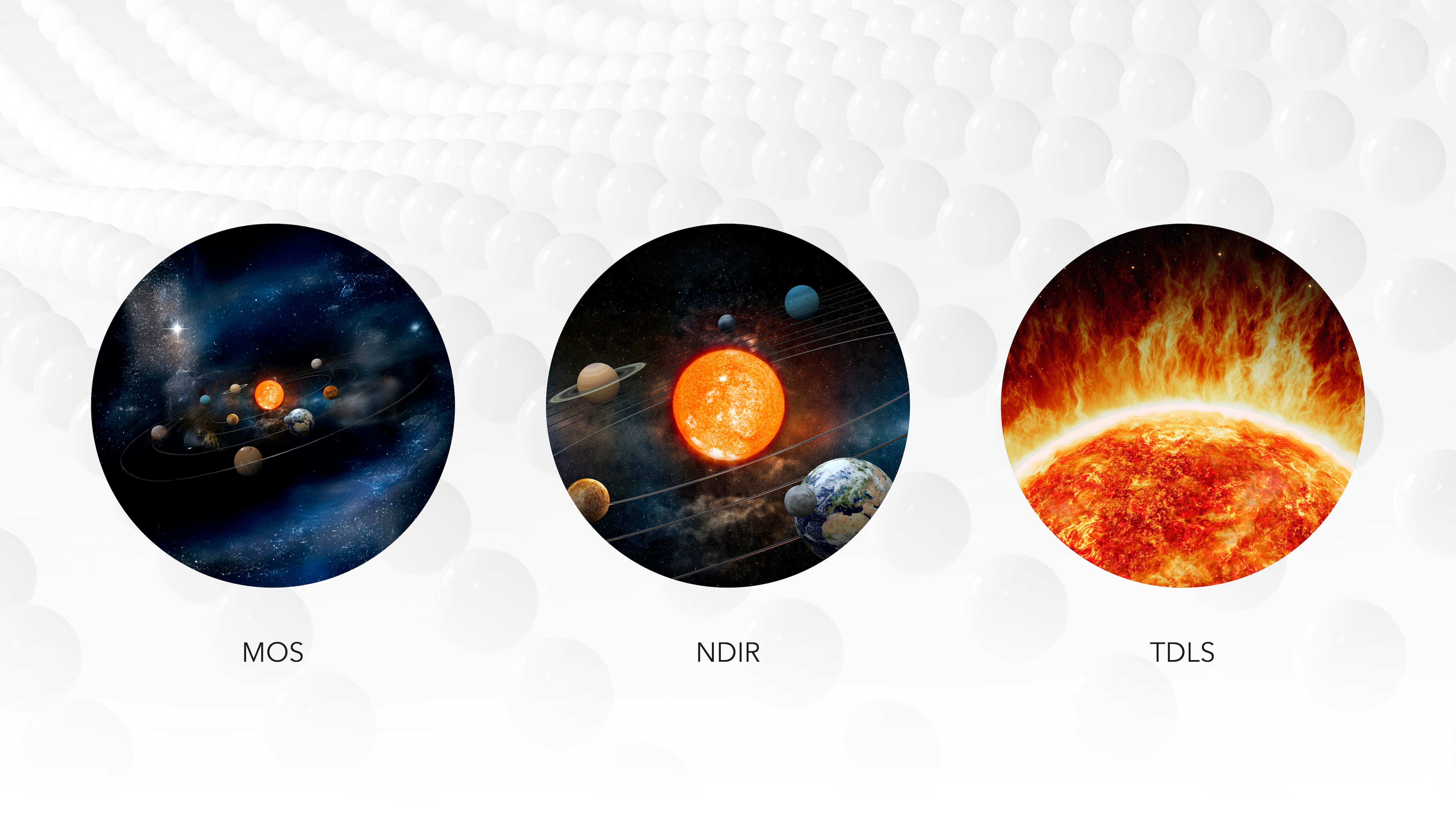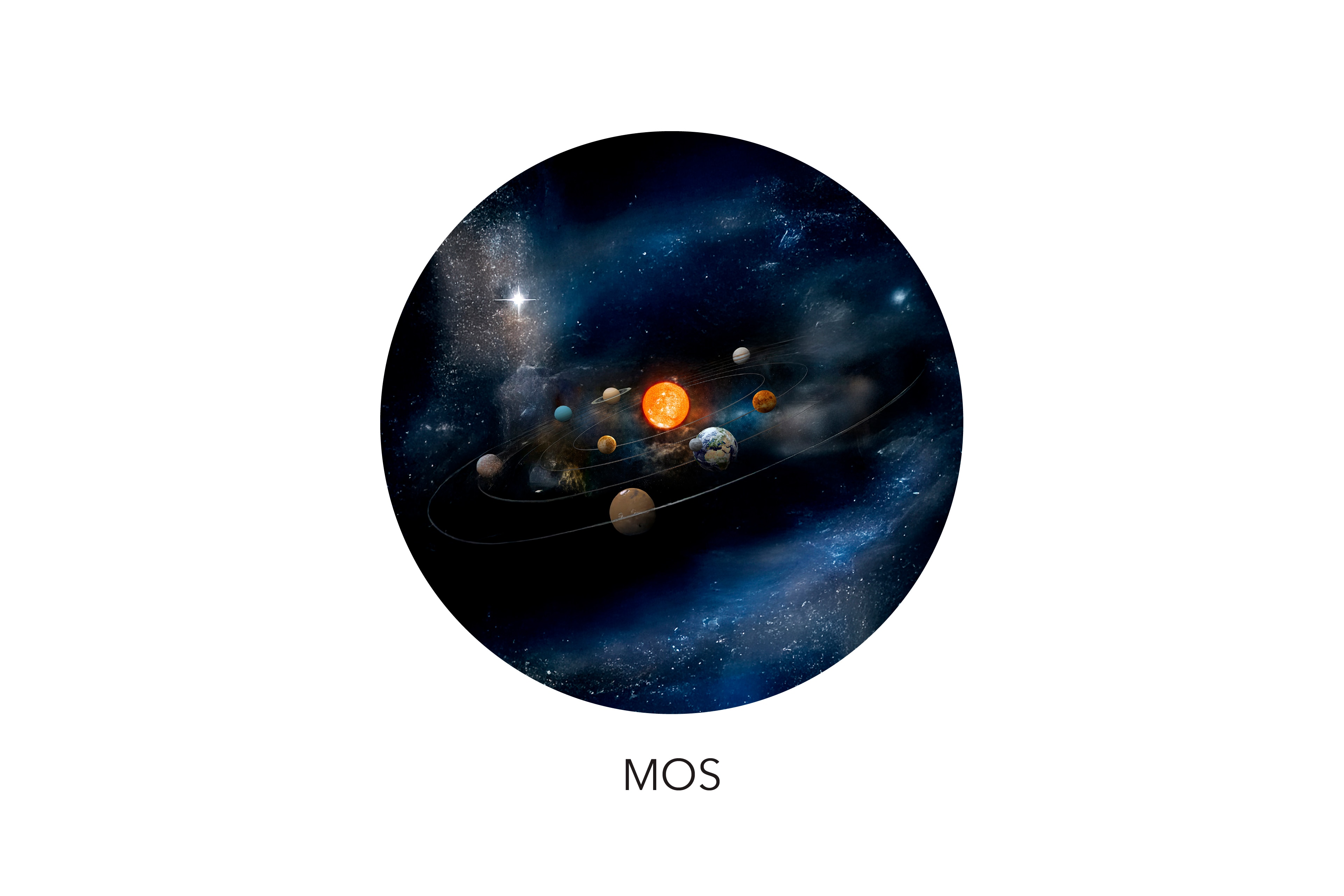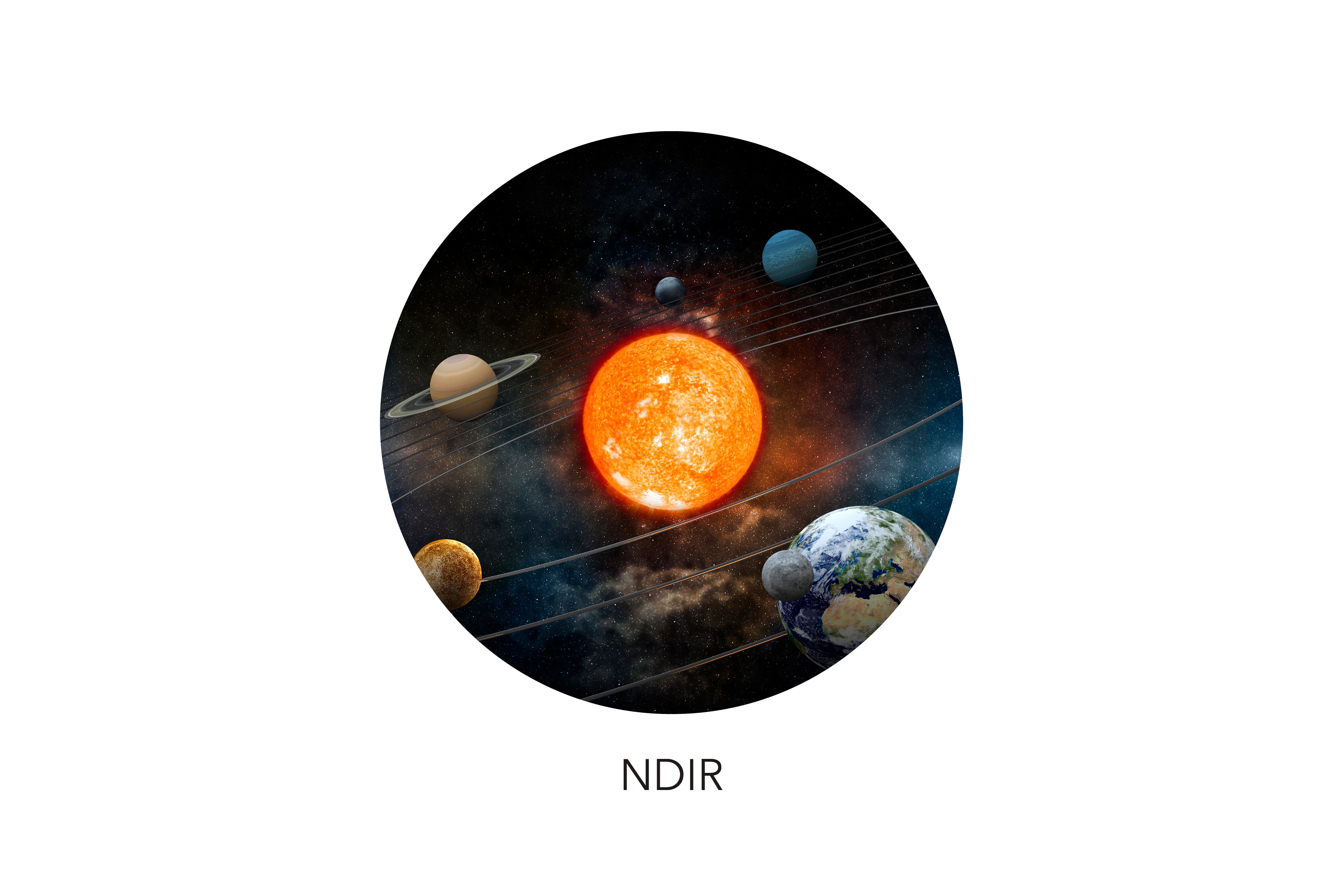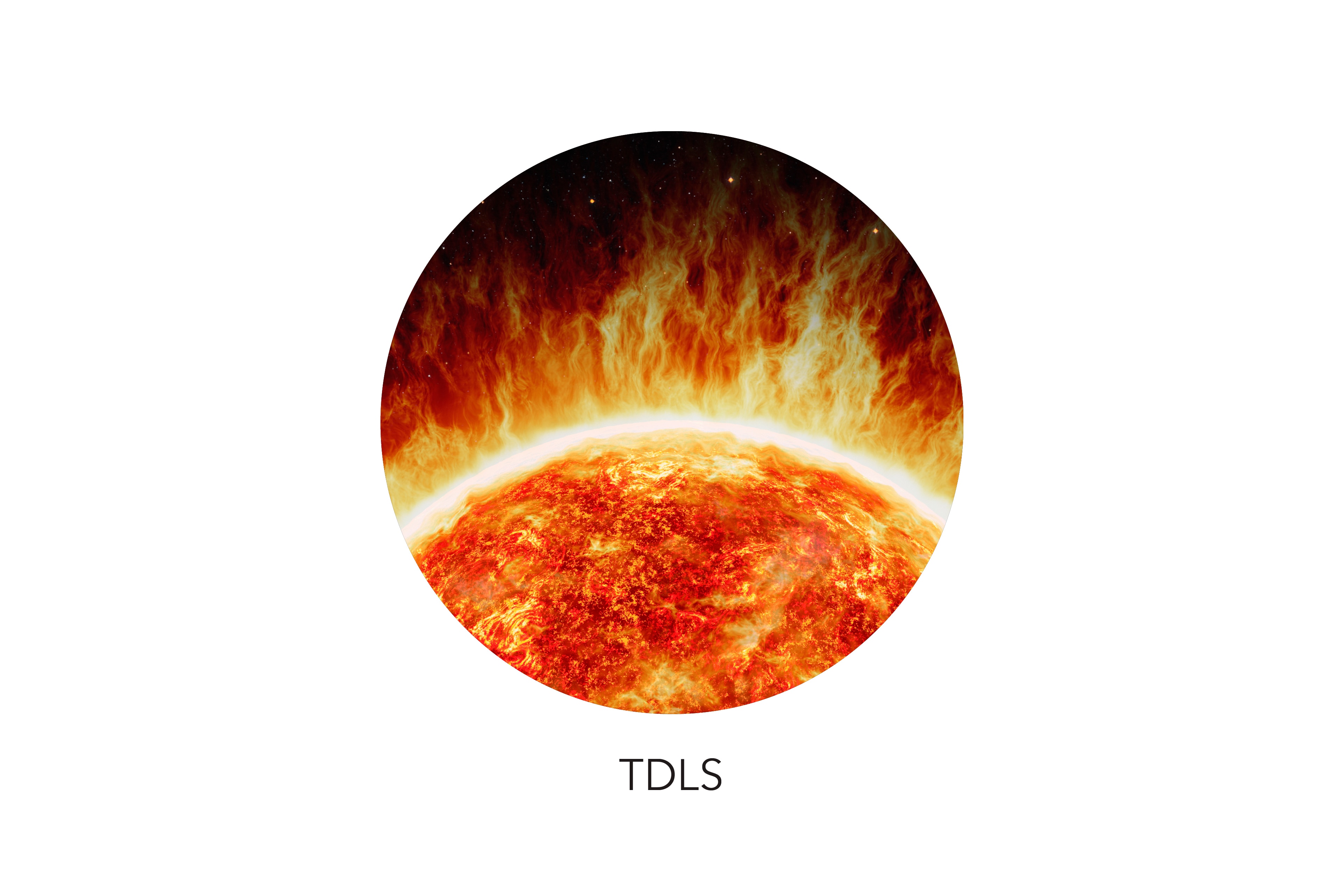Comparison of MOS, NDIR and TDLS sensors

Axetris Know-how21 Jul 2025
The world of gas sensors features various technologies, each with their own strengths and weaknesses. This article sets out the differences between MOS (Metal Oxide Semiconductor), NDIR (Non-Dispersive Infrared) and TDLS (Tunable Diode Laser Spectroscopy) sensors and shows why TDLS is considered the leading measuring principle, followed by NDIR and MOS.
MOS sensors detect gases, but with less precision – like distant celestial bodies that you can see without recognizing details. Ideal for simple applications.
NDIR sensors can look much closer: They detect individual “planets” in the gas mixture and deliver more precise results.
TDLS sensors get very close – like a telescope that recognizes fine structures on the sun’s surface. This allows them to accurately measure even tiny quantities of gas.


